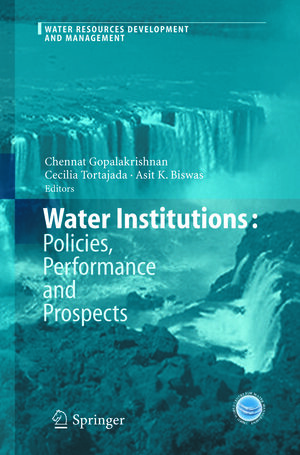
×
![Buchcover ISBN 9783540265672]()
From the reviews:
„This study is a major, first attempt to address comprehensively and in-depth the many issues associated with the institutional innovation in water resource management. This book consists of nine original papers by a team of scholars and experts in water institutions and policies.“ (JAWRA, August, 2006)
Water Institutions: Policies, Performance and Prospects
herausgegeben von Chennat Gopalakrishnan, Cecilia Tortajada und Asit K. BiswasIt is being increasingly realised that water is likely to be one of the most critical resource issues for the first half of the twenty-first century. Accelerating demand for water for various uses and user groups and ineffective measures to address - ter quality decline from point and non-point sources of pollution, have made water management more complex and difficult than ever before in human history. All the current trends indicate that water management will become even more c- plex in the future because of society’s higher demands for good quality water, and new and emerging impacts on the water sector due to the forces of globalisation. These include the liberalisation of trade in agricultural and manufactured products, information and communication revolution, and technological developments in - eas traditionally not considered to be water-oriented, like biotechnology. Impacts of these new and emerging forces on the water sector are still not fully understood or appreciated at present, but they are likely to change water use practices d- matically in many countries of the world during the coming decades.



